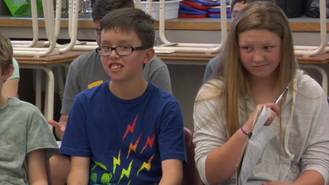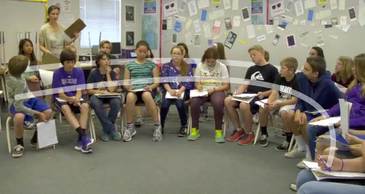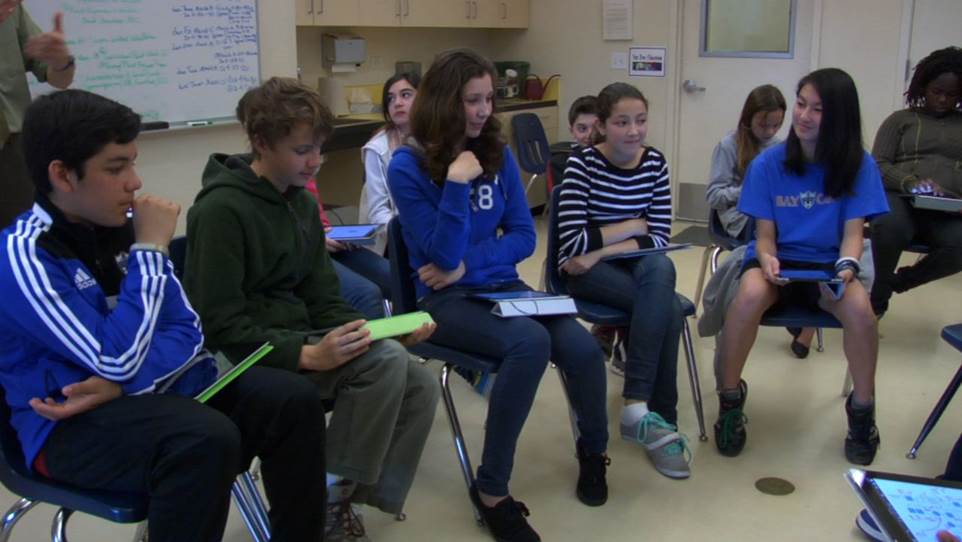How do you conduct a science seminar?
Advanced – Science Seminar Session 3
Session Goals
Teachers will learn 9 strategies for implementing science seminars in their classroom, including:
- Allow for awkward silence.
- Let students lead the discussion.
- Chime in at the right moment.
- Make a safe space.
- Communicate norms.
- Set up chairs in concentric “u-shapes.”
- Include mixed ability levels in circles.
- Encourage students to project supports.
- Establish a hot seat.

Session Slides
Advanced Science Seminar Session 3 PDF
Agenda
* Extension Discussion
- Video: Stepping Back During Science Seminars
- Presentation: Roles and Expectations for the Science Seminar
- Activity: Science Seminar
- Discussion: Reflect on the Science Seminar
- Takeaways
* Extension: Try it with your students
Materials
* Teachers will need the 3 Atacama Desert Data Sheets and “Preparing for the Science Seminar” sheet completed in the last session
*Extension discussion – Try it with your students!
Share your experience:
- Share your experience using the strategies covered in the last session.
Discussion questions:
- What went well?
- What was challenging for students? For you?
1. Video: Stepping back during science seminars
Watch the video below, which describes the role of the teacher during the science seminar.
Discussion Questions:
- What role did the teacher play in the science seminar?
- What strategies do you notice the teacher using to facilitate the science seminar?
- What concerns do you have about running a science seminar in your classroom?
- What do you think students will do well? What challenges do you anticipate students having?
2. Presentation: Roles and expectations for the science seminar
- Give a brief presentation on the teacher and student roles during the science seminar.
- Project the seating arrangement and describe that students will be seated in two concentric rows.
- Review interactional norms and sentence starters.
- Emphasize the teacher role is to step back and take notes while students lead the discussion.
- Explain that during the next activity, teachers will have the opportunity to be the students in the science seminar held during this seminar.

3. Activity: Science seminar

The task:
- Participate in the science seminar. There are two options depending on the size of the group:
- Have one large discussion if there are 10 or fewer participants.
- Have two shorter discussions with approximately half the group. Set up the chairs in a fishbowl pattern.
Claims:
- Prevailing winds on the Pacific coast cause extremely low precipitation in the Atacama Desert.
- The location of mountain ranges causes extremely low precipitation in the Atacama Desert.
- Surface temperatures of the ocean cause extremely low precipitation in the Atacama Desert.
4. Discussion: Reflect on the science seminar
Discussion Questions:
- As a “student,” what worked well for you? What was challenging?
- What types of instructional strategies can you see your students needing to interact in a science seminar?
- How could engaging in a science seminar help students develop a better understanding of the science content?
5. Session takeaways
Reiterate key points from this session:
- Allow for awkward silence.
- Let students lead the discussion.
- Chime in at the right moment.
- Make a safe space.
- Communicate norms.
- Set up chairs in concentric “u-shapes.”
- Include mixed ability levels in circles.
- Encourage students to project supports.
- Establish a hot seat.

* Extension – Try it with your students!
The task:
- Engage your students in a science seminar.
- For the next session, be prepared to discuss your experience.
View Other Sessions
Advanced Science Seminar Agenda
| Session Name | Description | Length |
|---|---|---|
| Session #1: What is a science seminar? | This session introduces the science seminar, then explores how the science seminar encourages students to grapple with the four challenging elements of argumentation. | 45 minutes |
| Session #2: How do you prepare students for a science seminar? | This session explores how to prepare students for the science seminar and how to support student participation during the science seminar. | 45 minutes |
| Session #3: How do you conduct a science seminar? | This session introduces teacher and student roles during the seminar, and gives participants the opportunity to engage in a science seminar. | 45 minutes |
| Session #4: How do you support students writing a scientific argument after a science seminar? | This session explores how the science seminar can be leveraged to support student writing of science arguments. | 45 minutes |

